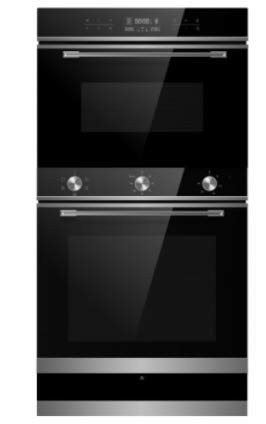15 Reasons Why You Shouldn't Ignore Oven And Hob
Understanding Kitchen Ovens and Hobs: A Comprehensive Guide
The kitchen is frequently referred to as the heart of the home, and for great reason. It is where households come together, meals are prepared, and memories are developed. Central to this cooking sanctuary are 2 important devices: the kitchen oven and the hob. Understanding their functions, types, and functionalities is crucial for effective cooking and can considerably improve a home chef's experience. This short article will explore the world of kitchen ovens and hobs, analyzing their various types, advantages, and pointers for making informed options.
Tabulation
- Introduction to Kitchen Ovens
- Kinds of Ovens
- Conventional Ovens
- Convection Ovens
- Microwave Ovens
- Steam Ovens
- Understanding Hobs
- Types of Hobs
- Gas Hobs
- Electric Hobs
- Induction Hobs
- Benefits of Using Ovens and Hobs
- Selecting the Right Oven and Hob for Your Kitchen
- Upkeep Tips for Ovens and Hobs
- Frequently asked questions
- Conclusion
1. Introduction to Kitchen Ovens
Ovens are vital devices in modern kitchens. They provide a regulated environment for baking, roasting, and broiling food. With numerous designs and performances, choosing the ideal oven can significantly affect cooking times, food texture, and flavor.
2. Types of Ovens
Conventional Ovens
Standard ovens are the most common type discovered in homes. They use either electric or gas power to heat the interior and generally feature a single cooking area.
Benefits:
- Versatile for baking, roasting, and broiling.
- Generally inexpensive.
Convection Ovens
Stove resemble standard ovens but come geared up with a fan that distributes hot air throughout the cooking chamber. This results in even cooking and browning.
Advantages:
- Reduced cooking times due to enhanced airflow.
- Enhanced browning and crisping of foods.
Microwave Ovens
Microwave utilize electro-magnetic radiation to heat food quickly, making them convenient for defrosting and reheating leftovers.
Advantages:
- Very quickly cooking times.
- Energy efficient.
Steam Ovens
Steam ovens use steam to cook, protecting the wetness and nutrients in food. They are particularly popular among health-conscious cooks.
Benefits:
- Healthier cooking option.
- Keeps vitamins and minerals in food.
3. Understanding Hobs
Hobs, also known as cooktops, are the flat surface areas on which pots and pans are positioned to cook food. They can be integrated into kitchen countertops and are available in numerous styles, fuel types, and styles.
4. Kinds of Hobs
Gas Hobs
Gas hobs utilize gas burners as their heat source, providing instantaneous heat and exact temperature level control.
Advantages:
- Excellent control over cooking heat.
- Typically cheaper to run than electric ones.
Electric Hobs
Electric hobs heat utilizing electric coils or glass surfaces. They might take longer to warm up than gas, but they offer a smooth cooking surface and are much easier to clean.
Advantages:
- Even heat distribution.
- Safe, as there's no open flame.
Induction Hobs
Induction hobs utilize electromagnetic energy to directly warm pots and pans. They require compatible cookware and offer instant responsiveness.
Advantages:
- Highly energy-efficient.
- Faster cooking times and exact temperature control.
5. Advantages of Using Ovens and Hobs
Both ovens and hobs come with their own distinct set of benefits that can boost any cooking experience. Here are a couple of crucial advantages:
- Diverse Cooking Options: Both appliances enable for a variety of cooking approaches consisting of boiling, frying, roasting, baking, and steaming.
- Time Efficiency: Modern ovens and hobs frequently include fast cooking settings, which save time in the kitchen.
- Precision Cooking: With sophisticated features, users can attain much better results in temperature level control and cooking times.
6. Selecting the Right Oven and Hob for Your Kitchen
When choosing the ideal oven and hob, various aspects should be considered:
- Size: Ensure that the home appliance fits conveniently in your kitchen area.
- Cooking Style: Consider what kinds of food you often prepare.
- Fuel Type: Whether gas or electric, consider accessibility and effectiveness in your location.
- Budget plan: Determine your spending plan and find home appliances that meet your requirements within that variety.
List for Choosing Your Oven and Hob:
- Assess kitchen space.
- Recognize your cooking preferences.
- Determine source of power availability.
- Compare functions and specifications.
- Set a spending plan range.
7. Maintenance Tips for Ovens and Hobs
Regular upkeep is important for keeping ovens and hobs in optimum condition. Here are some maintenance suggestions:
- Clean Regularly: Wipe down surfaces after each usage and deep clean periodically.
- Inspect Seals: For ovens, examine door seals to guarantee they are airtight.
- Analyze Burners: For gas hobs, keep burners without food debris to preserve reliable heating.
- Change Filters: If your oven has a filter, replace it as advised by the maker.
8. FAQs
1. What is Best Oven And Hob in between a conventional oven and a convection oven?Conventional ovens
prepare food through convected heat, while convection ovens circulate hot air, leading to much faster and more even cooking. 2. Do induction hobs require special cookware?Yes,
induction hobs need ferrous cookware that can being allured to work effectively. 3. Are steam ovens worth the investment?For health-conscious individuals or those who typically cook vegetables and delicate foods, steam ovens can be worth the investment
due to their capability to keep nutrients. 4. Can I integrate an oven and hob into one unit?Yes, lots of producers use combined units referred to as variety cookers, which integrate both an oven
and hob into a single appliance. 9. Conclusion Kitchen ovens and hobs are important parts of any cooking area, each offering distinct functions and functionalities suited for numerous cooking designs.
By comprehending the
kinds of ovens and hobs available, their advantages, and how to keep them, home chefs can cultivate a more effective and satisfying cooking experience. Whether one is an experienced cook or a beginner, making notified decisions about these important kitchen home appliances is crucial. 